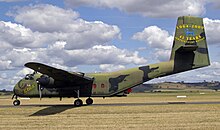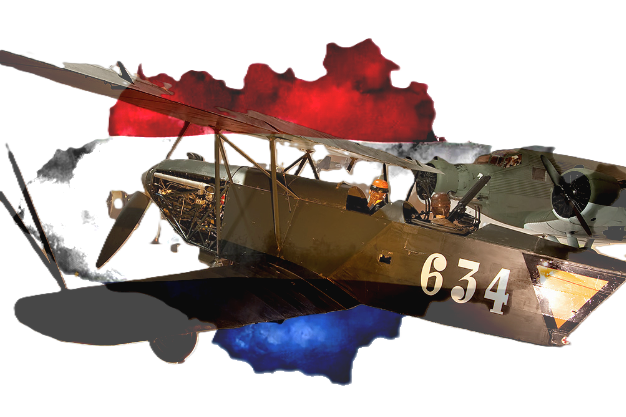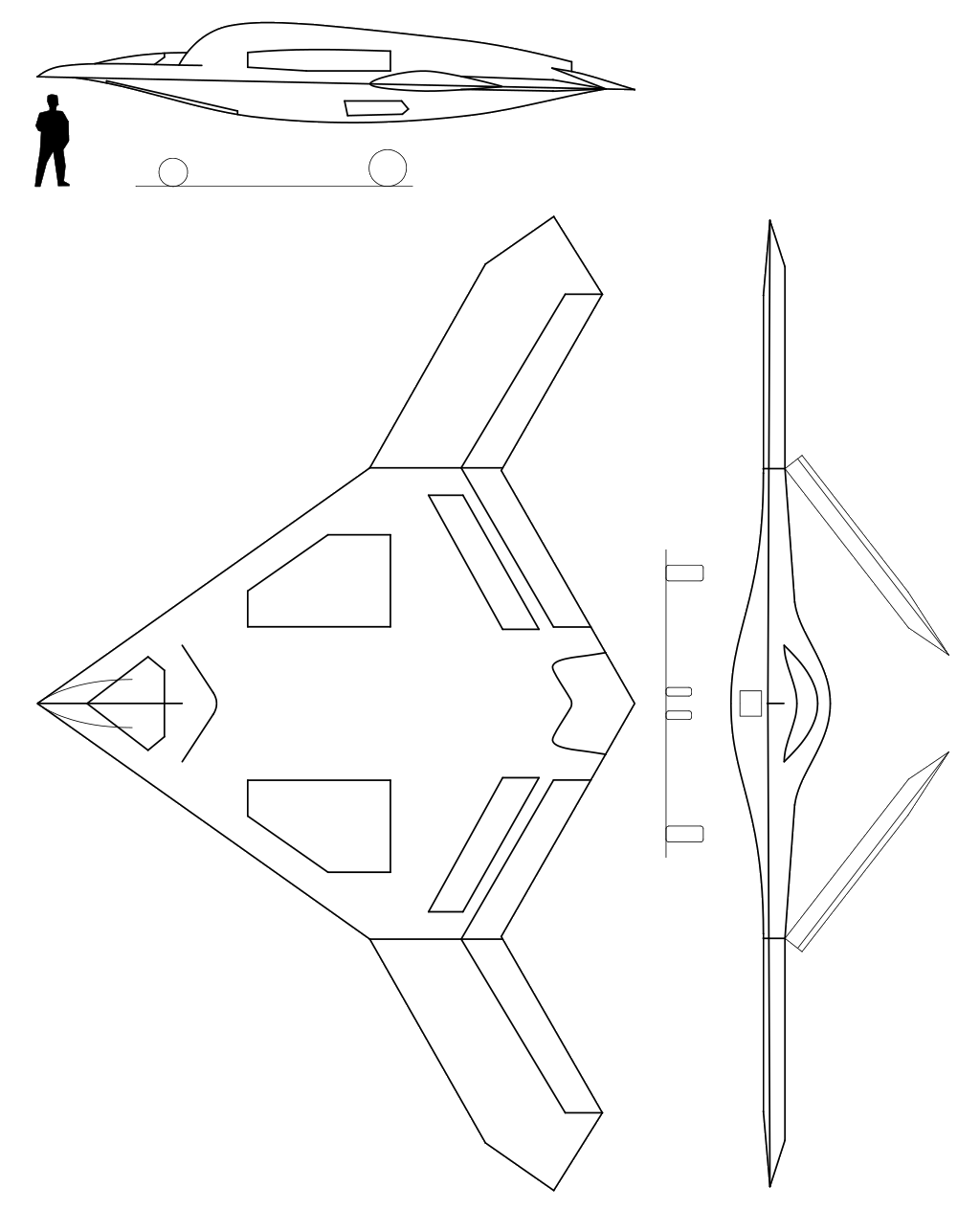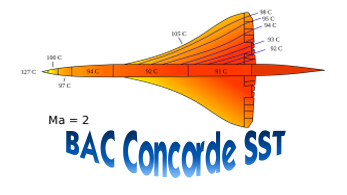de Havilland Canada
DHC-4 Caribou
 |
|
| General information | |
|---|---|
| Type | STOL transport aircraft |
| National origin | Canada |
| Manufacturer | de Havilland Canada |
| Status | Retired from military operators, limited service. Some turboprop conversions in active service. |
| Primary users | Royal Canadian Air ForceUnited States Army United States Air Force Royal Australian Air Force |
| Number built | 307 |
| History | |
| Manufactured | 1958–1968 |
| Introduction date | 1961 |
| First flight | 30 July 1958 |
| Retired | RAAF (2009) |
| Developed into | de Havilland Canada DHC-5 Buffalo |
.
History de Havilland Canada DHC-4 Caribou (designated by the United States military
as the CV-2 and later C-7 Caribou)
Manufactured 1958–1968

The de Havilland Canada DHC-4 Caribou (designated by the United States military as the CV-2 and later C-7 Caribou) is a Canadian specialized cargo aircraft with short takeoff and landing (STOL) capability. The Caribou was first flown in 1958 and although mainly retired from military operations, is still in use in small numbers as a rugged bush airplane.
The design was further developed as the de Havilland Canada DHC-5 Buffalo, adding turboprop engines and other changes that further improved its short-field performance to the point where it competes with light aircraft even with a full load.
Design

The De Havilland Canada (DHC) company's third short takeoff and landing (STOL) design was a big increase in size compared to its earlier DHC Beaver and DHC Otter, and was the first DHC design powered by two engines. The Caribou was similar in concept in that it was designed as a rugged STOL utility aircraft. The Caribou was primarily a military tactical transport that in commercial service found itself a small niche in cargo hauling. The United States Army ordered 173 in 1959 and took delivery in 1961 under the designation AC-1, which was changed to CV-2 Caribou in 1962
Variants

- DHC-4 Caribou
- STOL tactical transport, utility transport aircraft.
- CC-108
- Royal Canadian Air Force designation for the DHC-4 Caribou.
- YAC-1
- This designation was given to five DHC-4 Caribou, sold to the United States Army for evaluation.
- AC-1
- United States Army designation for the first production run of 56 DHC-4 Caribou. Later redesignated CV-2A in 1962.
- CV-2A
- United States Army AC-1 redesignated in 1962.
- CV-2B
- This designation was given to a second production run of 103 DHC-4 Caribou, which were sold to the U.S. Army, with reinforced internal ribbing.
- C-7A/B
- These designations were applied to all 144 Caribou transferred to the U.S. Air Force by the U.S. Army.
- DHC-4A Caribou
- Similar to the DHC-4, but this version had an increased takeoff weight.
- DHC-4T Turbo Caribou
- A conversion of the baseline DHC-4 Caribou powered by the PWC PT6A-67T turboprop engines designed, test flown and certified by the Pen Turbo Aviation company.
0
KmCeiling
0
KmCombat RANGE
0
Km/hAircraft Speed
0
Max Crew
Photo Gallery
de Havilland Canada DHC-4 Caribou
(designated by the United States military
as the CV-2 and later C-7 Caribou)
Manufactured 1958–1968


de Havilland Canada DHC-4 Caribou (designated by the United States military
as the CV-2 and later C-7 Caribou)
Manufactured 1958–1968
General Info
-
-
-
- Crew: 2 + loadmaster
- Capacity: 30 pax (civil) / 32 troops / 26 fully-equipped paratroops / 22 stretchers, 4 sitting patients and 4 attendants
- Length: 72 ft 7 in (22.12 m)
- Wingspan: 95 ft 7.5 in (29.147 m)
- Height: 31 ft 9 in (9.68 m)
)
-
-
Powerplant
-
-
-
- Maximum zero fuel weight: 27,000 lb (12,247 kg)
- Max takeoff weight: (12,927 kg)
- Maximum permissible weight for ferry missions: 14,197 kg)
- Maximum landing weight: 12,927 kg)
- Fuel capacity: 690 imp gal (830 US gal; 3,100 L)
- Powerplant: 2 × Pratt & Whitney R-2000-7M2 Twin Wasp 14-cylinder air-cooled radial piston engines, 1,450 hp (1,080 kW) each
-
-
Performance
-
- Maximum speed: 187 kn (215 mph, 346 km/h) at 6,500 ft (2,000 m)
- Cruise speed: 158 kn (182 mph, 293 km/h) at 7,500 ft (2,300 m) (maximum & econ)
- Stall speed: 59 kn (68 mph, 109 km/h)
- Never exceed speed: 208 kn (239 mph, 385 km/h)
- Range: 1,136 nmi (1,307 mi, 2,104 km) with maximum fuel inc. 45 minutes reserve
-
-
-
- 211 nmi (243 mi; 391 km) with maximum payoad inc. 45 minutes reserve
-
-
)
Related development
-
-
Aircraft of comparable role, configuration, and era
-
.
Links to Youtube & Others
In 1986, Boeing bought the company in a bid to improve production at DHC's Downsview Airport plants, as well as better position itself to compete for a new Air Canada order for large intercontinental airliners.
de Havilland Canada DHC-4 Caribou
Bombardier aimed to produce the Q400 more economically. A deal with its machinists union in June 2017
Youtube Link
A 3-part mega compilation of non-stop DeHavilland Caribou action! Truth be told, the ‘Bou is one of my favorite planes.













